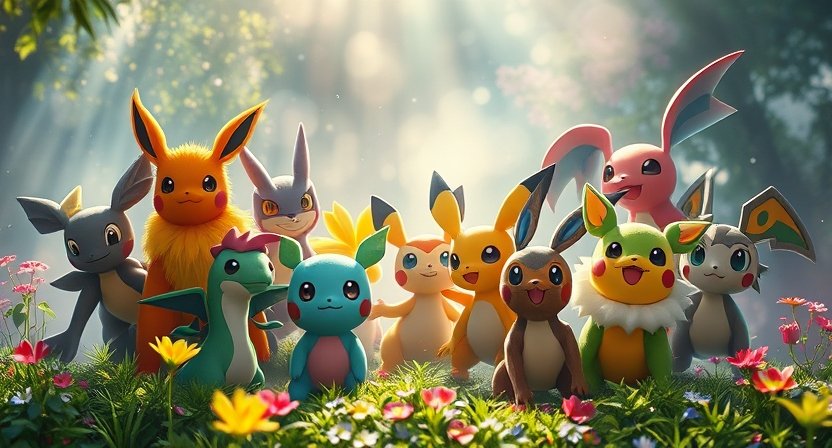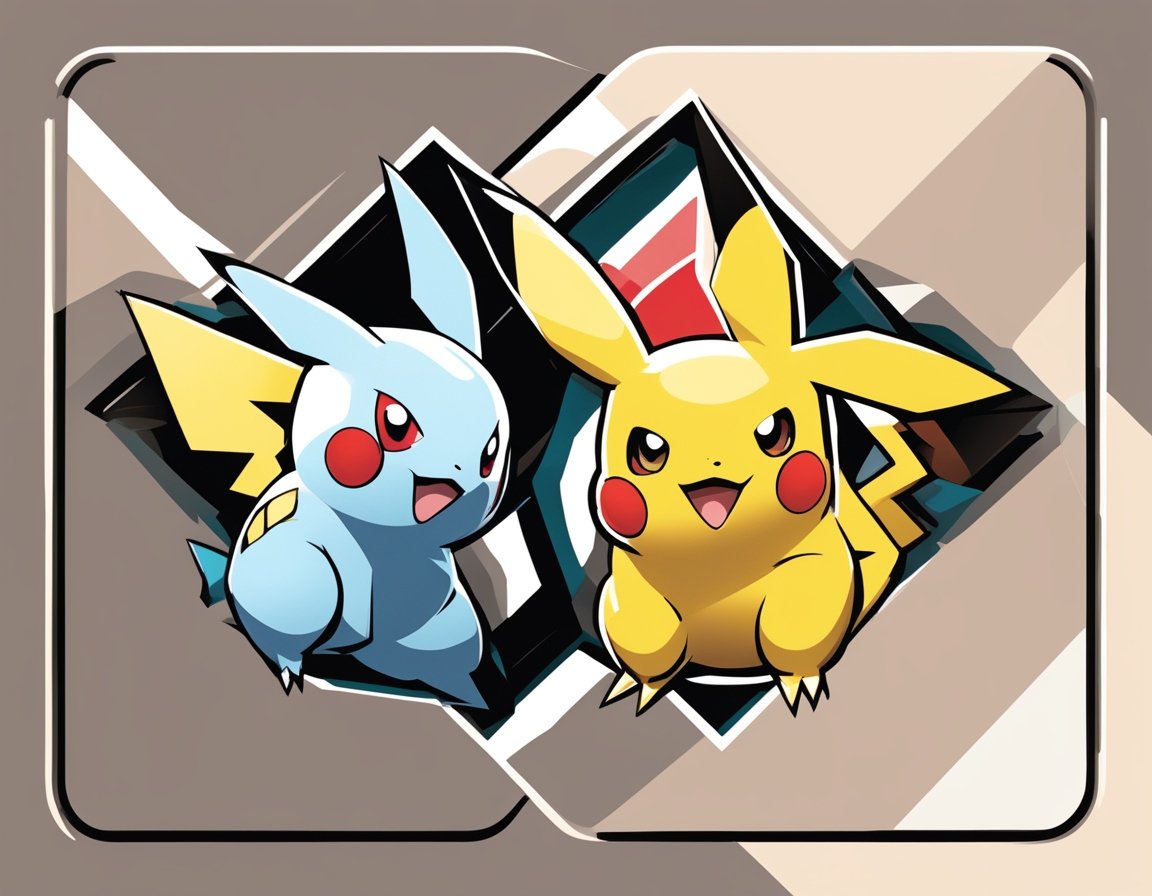The world of Pokémon trading cards is a captivating realm that has garnered immense popularity since its inception in the late 1990s. Originally launched as part of the broader Pokémon franchise, which includes video games, animated series, and merchandise, these trading cards quickly became a cornerstone of the Pokémon community. With millions of fans around the globe, the excitement of collecting, trading, and battling with Pokémon cards offers an unparalleled experience that has persisted through generations.
At its core, the Pokémon trading card game (TCG) allows players to engage strategically, using decks composed of various Pokémon, Trainer, and Energy cards. This interactive format not only promotes skillful gameplay but also fosters a sense of camaraderie among collectors and players alike. The thrill of seeking rare cards and assembling powerful decks adds a dynamic layer to the nostalgic experience that fans treasure.

The cultural significance of Pokémon trading cards cannot be overstated. Over the years, these cards have transcended their initial purpose, evolving into a phenomenon linked to social interaction and community building. They serve as a medium through which fans express their enthusiasm for the franchise, often creating friendships and connections that last a lifetime. Additionally, the rise of Pokémon tournaments and trading events has solidified the TCG’s status as a competitive sport, attracting both casual players and serious competitors.
As we delve deeper into this blog post, it is essential to recognize the characters that have become iconic symbols in the Pokémon universe. An iconic character is often defined by its popularity, unique design, and impact on the franchise as a whole. The characters featured in the following sections embody these qualities, making them stand out in the vast collection of Pokémon trading cards.
Criteria for Iconicity
Establishing the most iconic Pokémon card characters necessitates a multifaceted approach that considers various criteria. Primarily, cultural impact plays a pivotal role in a character’s recognition and lasting presence in the Pokémon universe. Characters that resonate with wider audiences, not just within the confines of the trading card game, elevate their status to iconic levels. For instance, certain Pokémon have become cultural symbols, featured in various media forms including television shows, movies, and merchandise, which enhances their visibility and relevance.
Another essential criterion is the popularity of a character among fans. This can be assessed through various metrics, such as official merchandise sales, online engagement, and tournament play. Popularity can indicate how entrenched a character is within the community, reflecting the deep emotional connections that fans develop over time. Characters that frequently appear in gameplay, competitive scenes, or fan art often achieve a heightened level of iconicity.
Historical significance within the Pokémon franchise also contributes to a character’s iconic status. Certain Pokémon hold notable places in the timeline of the franchise’s development and growth. For example, the original Pokémon, which debuted in the first generation, typically command greater recognition due to their role in establishing the franchise itself. Such foundational characters have influenced subsequent games, expansions, and series, leading to their enduring appeal.
Finally, contributions to Pokémon lore cannot be overlooked. Characters that are pivotal to storytelling, character development, or the unfolding of major plotlines in the games or animated series often achieve iconic status. These elements intertwine to create a comprehensive evaluation of a character’s iconicity, highlighting their impact on both the franchise and fan communities.
Countdown of the Top 10 Iconic Pokémon Characters
As we delve into the world of Pokémon, it is essential to highlight the top ten most iconic Pokémon card characters that have had a lasting impact on the franchise. Each of these characters possesses a unique blend of abilities, characteristics, and a storied history that makes them memorable among fans and players alike.
Starting with Pikachu, this Electric-type Pokémon has become synonymous with the Pokémon brand. Known for its agility and powerful Electric Moves like Thunderbolt, Pikachu’s charm and cuteness have won the hearts of millions. Its role as Ash’s primary companion in the animated series further solidified its status in the Pokémon card game, where it is often featured prominently.
Next is Charizard, a Fire/Flying-type Pokémon that smokers the competition with its fierce appearance and devastating moves like Flamethrower and Fire Spin. This character stands out not only for its competitive prowess but also as a fan-favorite card, reflecting its popularity in various trading card expansions.
Adding complexity to our countdown, we find Bulbasaur, the Grass/Poison-type Pokémon and one of the original starters. Bulbasaur is recognized for its adaptability and healing abilities. Its role in the Pokémon game emphasizes strategy and support, portraying a different angle to Pokémon battles compared to its more aggressive counterparts.
Then we encounter Gengar, a Ghost/Poison-type that brings a mischievous aspect to the game with its ability to manipulate shadows. Gengar’s unique power to evade opponents while delivering high-damage attacks like Shadow Ball has contributed to its legacy in competitive play.
Continuing our list, we have Jigglypuff, widely known for its enchanting lullaby. As a Normal/Fairy-type Pokémon, Jigglypuff captures the essence of whimsical gameplay. Its ability to put opponents to sleep adds a playful yet tactical element to gameplay, reminding players of strategy even in moments of fun.
The iconic Mewtwo, a genetically-engineered Psychic-type Pokémon, represents the themes of power and evolution. Notable for its unmatched strength, strategies involving Mewtwo often lead to decisive victories, securing its spot in the top 10 as a legendary card beloved by collectors.
As we transition into the second half of our countdown, Snorlax stands as a symbol of bulk and resilience. Its high HP and defensive capabilities make it a strong contender in the Pokémon card game, embodying a strategy focused on endurance and stability during battles.
Also deserving mention is Lucario, a Steel/Fighting-type Pokémon famed for its aura abilities. Lucario’s balance of speed and power resonates well with players who appreciate a diverse approach to combat, making it a staple in both battles and card decks.
At number nine, Espeon represents the Psychic evolution of Eevee, showcasing speed and special attack prowess in duels. Espeon’s elegant design and powerful psychic abilities have secured its place among notable characters in the Pokémon trading card universe.
Lastly, we conclude our countdown with the beloved Gardevoir. This Psychic/Fairy-type Pokémon is characterized by its supportive role in battles, with an emphasis on healing and special moves. Gardevoir’s charm and competence have established it as a noteworthy icon, cherished by trainers for its strategic capabilities.
In summary, these ten iconic Pokémon characters span various types and abilities, each contributing uniquely to the Pokémon card game and culture. Their enduring popularity showcases not only their design but also their narrative significance within the beloved Pokémon universe.
Legacy and Impact of Iconic Pokémon Characters
The legacy of iconic Pokémon characters, such as Pikachu and Charizard, extends far beyond their initial introduction in the Pokémon franchise. These characters have not only shaped the narrative and aesthetics of the game; they have also played a pivotal role in influencing subsequent Pokémon designs and the overall evolution of the franchise. Their popularity has prompted the creation of numerous merchandise lines, including toys, clothing, and collectibles, which have become essential elements of the Pokémon culture. As symbols of the franchise, these characters have managed to transcend generations, engaging both veteran fans and newcomers alike.
One of the most profound impacts of these iconic characters is the sense of community they foster among fans. Pokémon Trading Card Game tournaments often serve as social events where enthusiasts gather to share their passion for the game. The communal experience of trading cards, discussing strategies, and reminiscing about their favorite Pokémon further solidifies the characters’ roles in forming connections among fans. This vibrant community exists both in physical spaces and online platforms, where forums and social media channels provide opportunities for discussions, fan art, and appreciation for the timeless classic.
Today, the legacy of these characters is remembered through both nostalgia and innovation. Pokémon’s ongoing development includes reinterpretations and new designs that echo past motifs, ensuring that the essence of the original characters is preserved while exploring new narratives. In this way, iconic Pokémon characters remain not only relevant but also influential in shaping the future of Pokémon trading cards and related merchandise. As new generations discover the charm of these beloved creatures, their enduring presence reinforces the significance of nostalgia within the ever-expanding Pokémon universe. This blend of legacy and modernity supports the franchise’s ongoing growth, promising a vibrant future for both the characters and the fan community.

